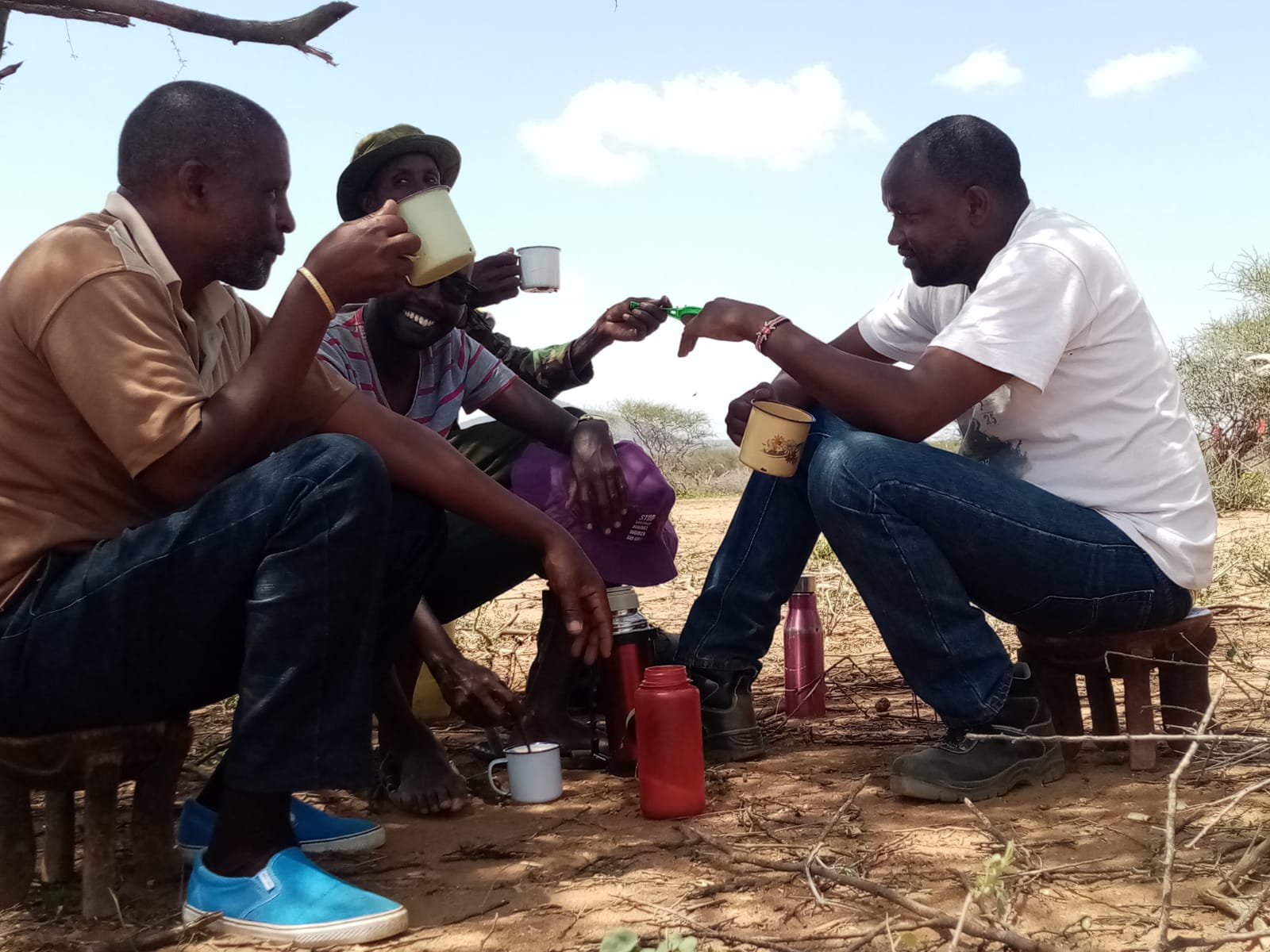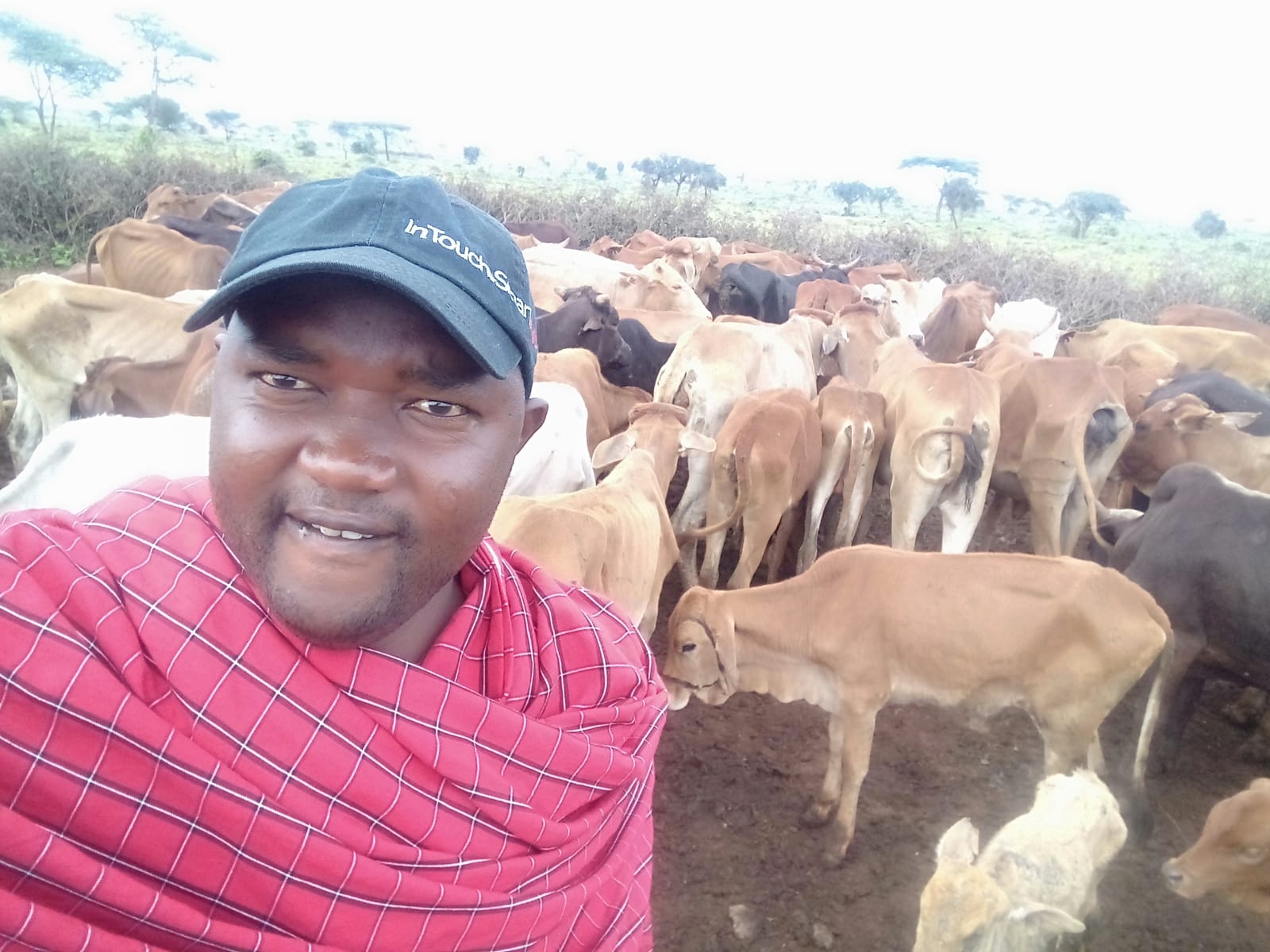“Let me start by saying, it takes a lot. You need to have a team that is really hard-working and not afraid of getting their hands dirty.” Jackson Kikardi manages the soil sampling process with project partner Soils for the Future for the Northern Kenya Rangelands project. He and the Soils for the Future team conducted sampling to establish baseline soil carbon levels in 2012 before the project began, and have gone back to measure the change in soil carbon in 2016 and again in 2021. Jackson is passionate about the work, but the realities of the remote landscape certainly make it challenging. “It requires a lot of walking,” he says. “The soil sampling points are located randomly by satellites. So some of them are very inaccessible and require you to walk about five kilometers to the point and then back. So if you get some very tough points, by the end of the day you might end up doing only three.”
Jackson lives in Kajiado County, in the southern region of Kenya. His full time job is monitoring and analyzing data for Lion Guardians, an organization focused on wildlife management and conservation across East Africa. But he is still able to take the time to support the expansive soil sampling efforts of this project in the north. 
Here’s what the process looks like: At the start of the project, sampling regions were determined strategically to ensure representation of the project area, and sampling sites within those regions were determined through randomization. When it’s time to sample, Jackson receives the sampling locations as GPS coordinates and uses his GPS device to locate each point out in the bush. Once at a point, he conducts two samples from three cores: two cores for Soil Organic Carbon and one for Bulk Density. He hammers cores into the soil 20cm deep, places a plate underneath the core so that no soil is lost, and pulls up the sample.
For the Soil Organic Carbon test, two sample cores are combined in a container, where he breaks soil clods and removes matter like wood, roots, and stones. Then he takes approximately two 100g samples of the remaining material, and places them in plastic bags with date, GPS coordinates, and label. One of these SOC samples is submitted for SOC% analysis using a Mid-InfraRed (MIR) at the International Centre for AgroForestry (ICRAF) in Nairobi, and the other is archived in a cool, dry, and secure location at NRT Headquarters.
Bulk Density is similar, but the lab requires a smaller particle unit to conduct the test – so he uses a sieve to ensure that only particles 2mm or smaller get through. Then weigh, bag, and label again, and on to the next point. This is a process that needs to be repeated over 200 times across the landscape to capture a statistically significant sampling of soil carbon dynamics in the project area at any one time.
Jackson works closely with the Conservancies that participate in the project during the sampling process. Before going to a Conservancy’s territory to conduct sampling, he notifies them by email to confirm when he will be in which location. He then employs Conservancy members, who have “knowledge of the bush,” to help him navigate the terrain. “It can be very hectic if you get to an area and you don’t have knowledge of the bush, so you have to have a local person, preferably two. Every time I go to a Conservancy, I have at least two staff from the Conservancy to help me.”
Out there in the bush, Jackson has had some adventures. One time he was out with a group in a “very bushy and very dry” area. “We were doing soil sampling, and we were all busy. But when we were done, we realized we were right in the middle of a herd of elephants. We couldn’t do anything! They had already seen us. But the community ranger who was with us told us to stay calm, the elephants are going, they are not after you. And slowly they left, and we could walk to the next point.”
When asked what he likes most about the work, Jackson talked about observing the project’s impact since it began in 2012. “I think the entire time I’ve spent with this project has been really fantastic because at the end, the project has been successful,” he said. “I’m helping the pastoralists who chose to partner with NRT and Native to do this project, and I’m happy that this project is changing their lives; a lot of people have benefited so far.”


